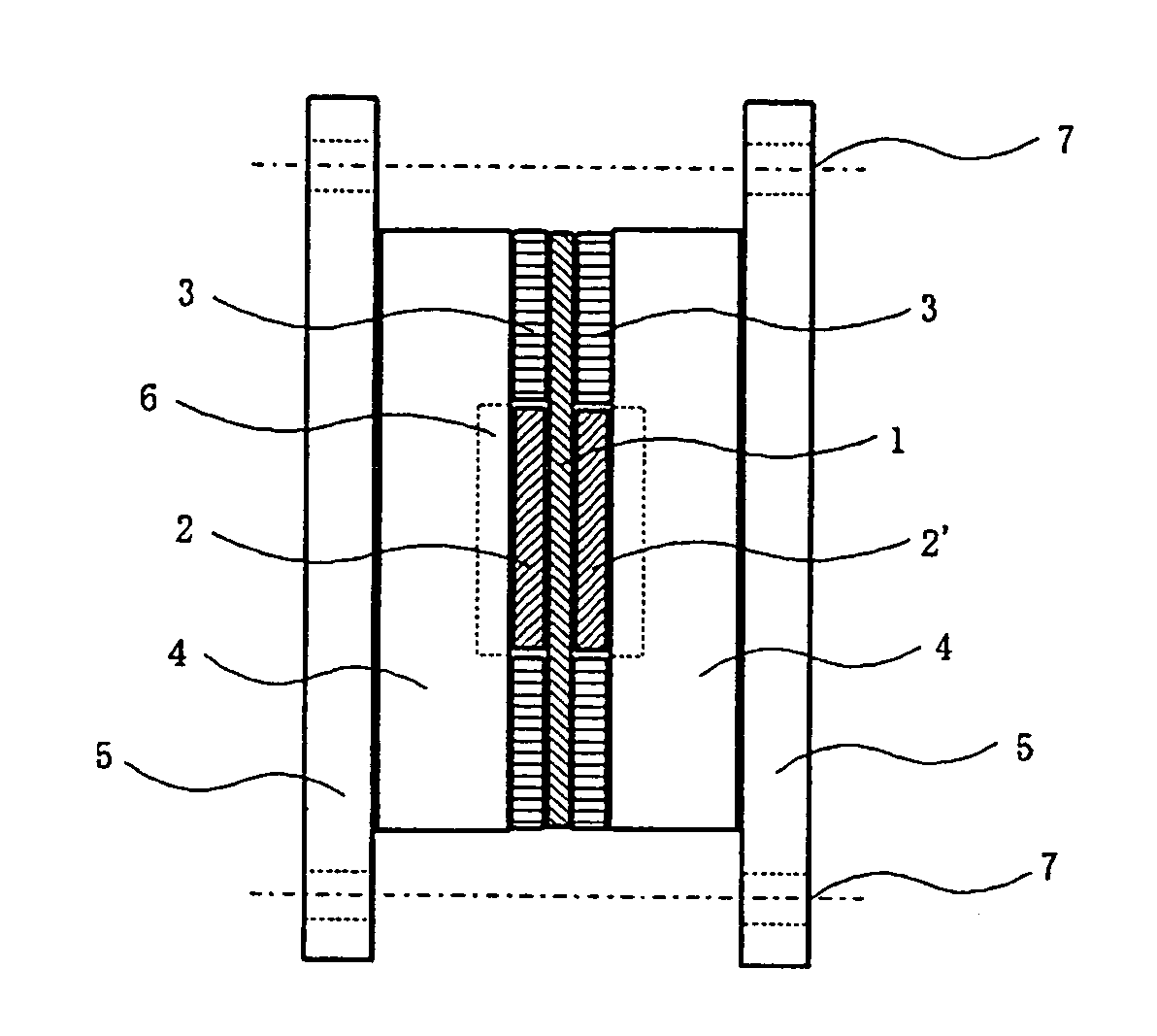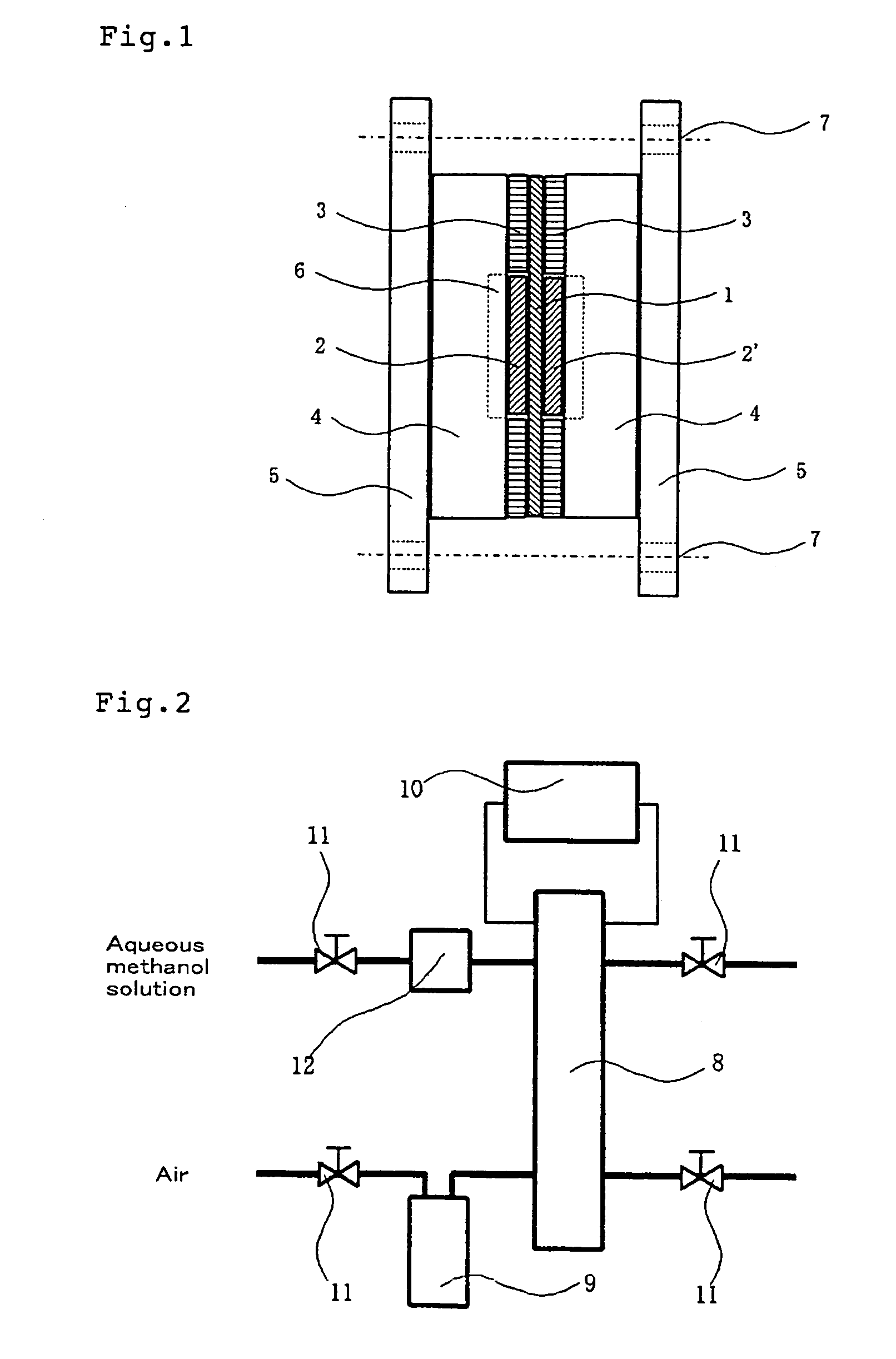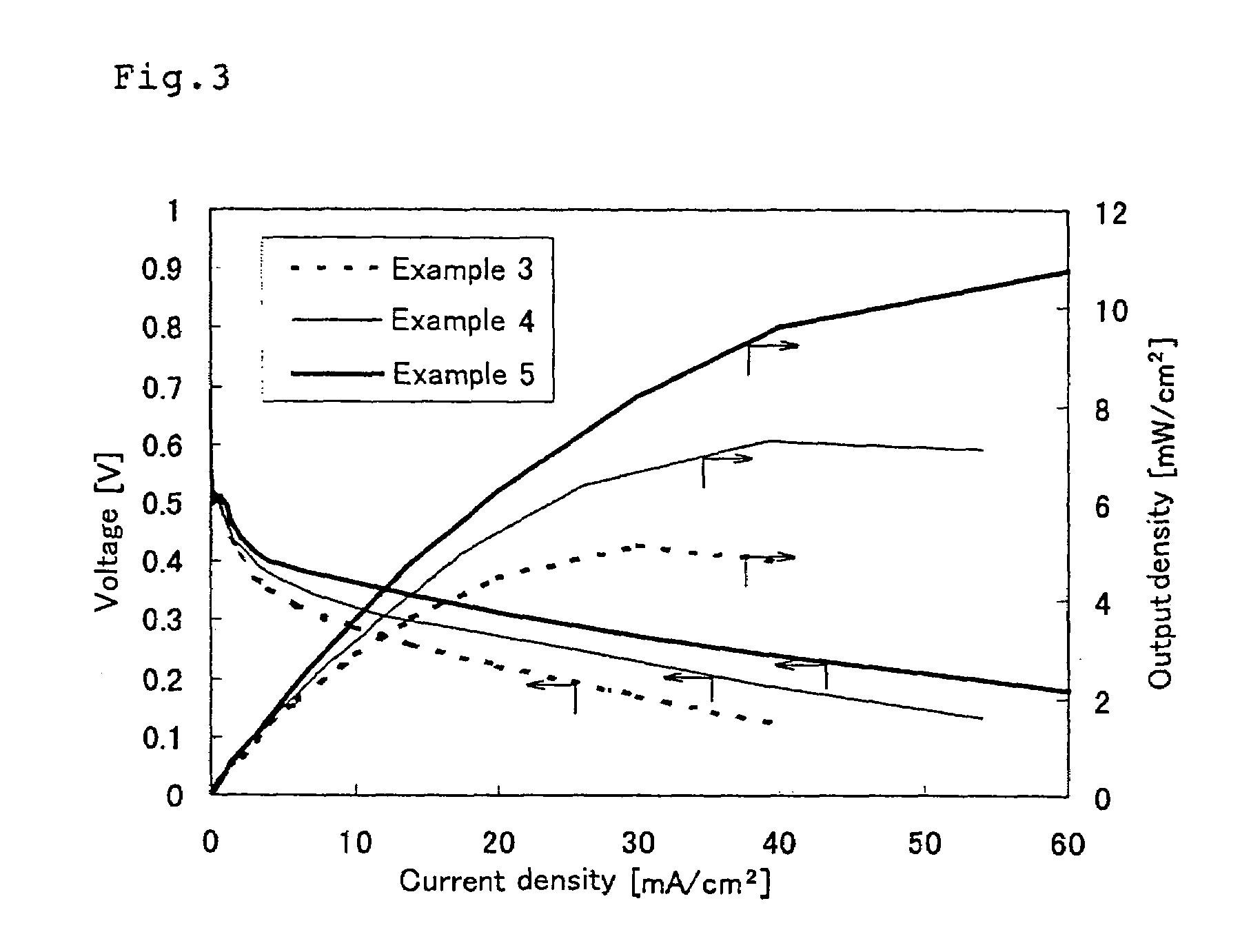Crosslinkable aromatic resin having protonic acid group, and ion conductive polymer membrane, binder and fuel cell using the resin
a protonic acid group and aromatic resin technology, applied in the field of crosslinkable aromatic resins, can solve the problems of large current not being taken, drastic decrease of ion conductivity, difficulty in downsizing the system, etc., and achieve excellent power generation efficiency and reliability, low cost, and low cost
- Summary
- Abstract
- Description
- Claims
- Application Information
AI Technical Summary
Benefits of technology
Problems solved by technology
Method used
Image
Examples
synthesis example 1
[0346]4,4′-Difluorobenzophenone (0.525 mol) and 210 ml of 50% fuming sulfuric acid were charged in a reaction flask equipped with a stirrer, a thermometer and a condenser, and reacted at 100° C. for 12 hours. The reaction mixture was discharged into 1000 g of ice water, and neutralized with 210 g of NaOH. Subsequently, 210 g of NaCl was added, dissolved under heating and then cooled to allow the mixture to stand overnight. After the crystals precipitated were filtered, 400 ml of water and 400 ml of ethanol were added to dissolve under heating and cooled by leaving in the atmosphere to recrystallize. The crystals precipitated were filtered and dried at 100° C. for 6 hours to form 5,5′-carbonylbis(2-fluorobenzenesulfonic acid) sodium salt described below as white crystals. Obtained amount was 155.2 g (0.386 mol, yield 70%).
[0347]
[0348]1H-NMR (D2O, TMS) ppm δ 7.46 (2H, dd, a-H×2) 7.99 (2H, ddd, b-H×2) 8.23 (2H, dd, c-H×2)
[0349]
Elemental analysis (%)CHCalculated value36.981.43Analyzed v...
synthesis example 2
[0350]4,4′-Dichlorodiphenylsulfone (0.60 mol) and 180 ml of 30% fuming sulfuric acid were charged in a reaction flask equipped with a stirrer, a thermometer and a condenser, and reacted at 110° C. for 6 hours. The reaction mixture was discharged into 1.8 kg of ice water. Subsequently, 360 g of NaCl and 500 ml of water were added, dissolved under heating, and cooled by leaving in the atmosphere, and then the mixture was left to stand overnight. After the crystals precipitated were filtered, 300 ml of water and 350 ml of ethanol were added to the crystal to dissolve under heating. And the mixture was cooled by leaving in the atmosphere to recrystallize. The crystals precipitated were filtered and recrystallized again with 180 ml of water and 180 ml of ethanol. The crystals were dried at 100° C. for 6 hours and at 200° C. for 4 hours to give 5,5′-sulfonyl bis(2-chlorobenzylsulfonic acid) sodium salt described below as white crystals. Obtained amount was 95.5 g (0.194 mol, yield 32%).
[0...
synthesis example 3
[0354]In a 500 ml three-necked flask equipped with a Dimroth condenser and a 100 ml dropping funnel, 2,2-bis(4-hydroxy-phenyl)-propane (10 g, 0.04 mol), sodium sulfite (48.3 g, 0.35 mol), sodium carbonate (2.8 g, 0.03 mol) and 200 ml of water were charged, and 37% formaldehyde aqueous solution (10.5 g, 28.4 ml, 0.35 mol) was added dropwise to the mixture over 15 minutes while refluxing under heating. The reaction was carried out for 12 hours while refluxing under heating. After cooling to room temperature, 10% hydrochloric acid was added until pH of the solution becomes 7. A solid precipitated was separated by filtration and washed with water and methanol to give 26.0 g (yield, 74.4%) of 2,2-bis(3,5-bis(sulfomethyl)-4-hydroxyphenyl)propane sodium salt.
Analytical Results:
[0355]1H-NMR (D2O): δ (ppm) 7.10 (s, 2H), 4.09 (s, 4H), 1.52 (s, 3H)
PUM
| Property | Measurement | Unit |
|---|---|---|
| Percent by mass | aaaaa | aaaaa |
| Percent by mass | aaaaa | aaaaa |
| Percent by mole | aaaaa | aaaaa |
Abstract
Description
Claims
Application Information
 Login to View More
Login to View More - R&D
- Intellectual Property
- Life Sciences
- Materials
- Tech Scout
- Unparalleled Data Quality
- Higher Quality Content
- 60% Fewer Hallucinations
Browse by: Latest US Patents, China's latest patents, Technical Efficacy Thesaurus, Application Domain, Technology Topic, Popular Technical Reports.
© 2025 PatSnap. All rights reserved.Legal|Privacy policy|Modern Slavery Act Transparency Statement|Sitemap|About US| Contact US: help@patsnap.com



